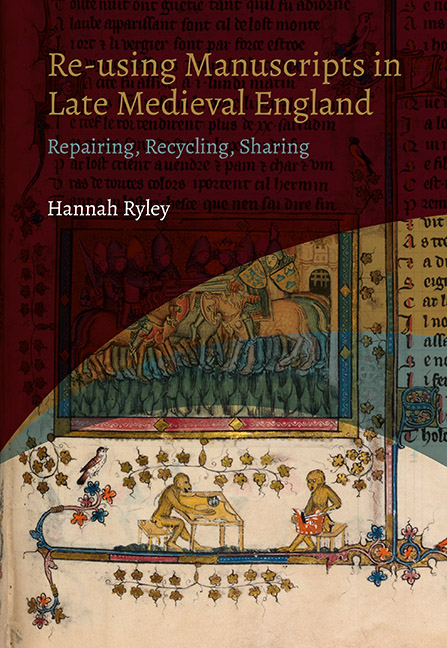3 - Making Marks On Books
Published online by Cambridge University Press: 16 July 2022
Summary
Surviving markings on books testify to manuscript durability and to the rich potential of books for re-use as writing supports. The marks depicted in Figure 10 are clustered together on the final flyleaf in a collection of religious works by ‘Jon þe blynde Awdelay’ dating from the second quarter of the fifteenth century. There are two upside-down doodles of faces, calligraphic flourish practice, the name ‘John’ scrawled twice, floating letters and squiggles, and various lines of writing in Latin and English, including a late fifteenth-century rhyme about a licentious friar named Andrew.As this busily re-used medieval flyleaf suggests, various kinds of written and drawn re-uses took place on the manuscript page. Medieval manuscript markings could take diverse forms and serve diverse purposes. These markings were not always and not only idle space-fillers, as this chapter will show. Such markings are remarkably common survivals from the long history of human mark-making.
This chapter focuses on how the book is re-used as an object for writing on. This study assumes the conventional use of books to be as carriers of a main text, used primarily for reading and responding to that text. Throughout this chapter I employ the words use and re-use in the senses explored by William H. Sherman, who invokes a language of ‘use’ around books, rather than the language of ‘reading’.Accordingly, this chapter also passes over the standard use of margins, that is, those markings that engage with and complement the main text, usually referred to as marginalia. Marks in margins have been described eloquently as ‘the human presence’ in books, but also as ‘a farrago of abstrusities, […] human baggage weighing down the books on our stacks’.This chapter privileges particularly ‘abstruse’ re-uses of marginal space.
Abstruse marginalia are part of a long history of mark-making and are found throughout the ages in books and on other surfaces. From rock art, inscribed clay tablets, papyrus scrolls and stones, to contemporary graffiti art, humans have made marks on the materials and things that they find in the environment around themselves. The habit of marking books of course continues to this day, and the popular fascination with marginalia has gained currency. This chapter investigates a wide-ranging variety of non-verbal and verbal marks in fifteenth-century books.
- Type
- Chapter
- Information
- Re-using Manuscripts in Late Medieval EnglandRepairing, Recycling, Sharing, pp. 105 - 140Publisher: Boydell & BrewerPrint publication year: 2022

